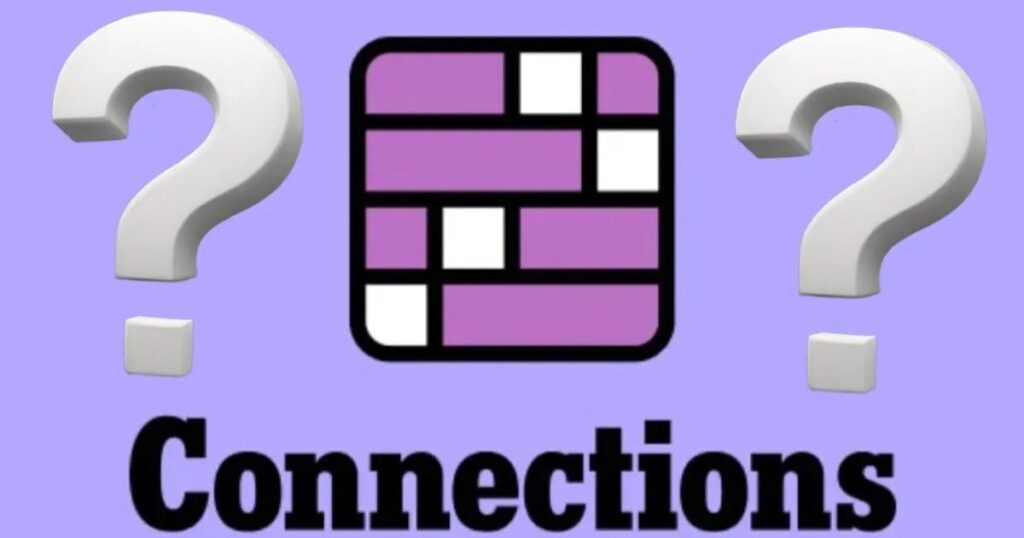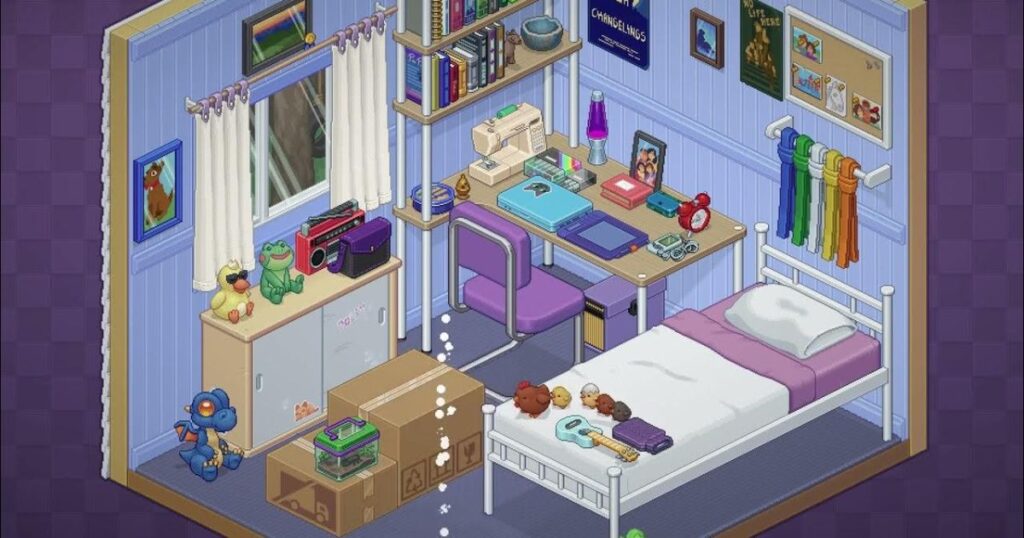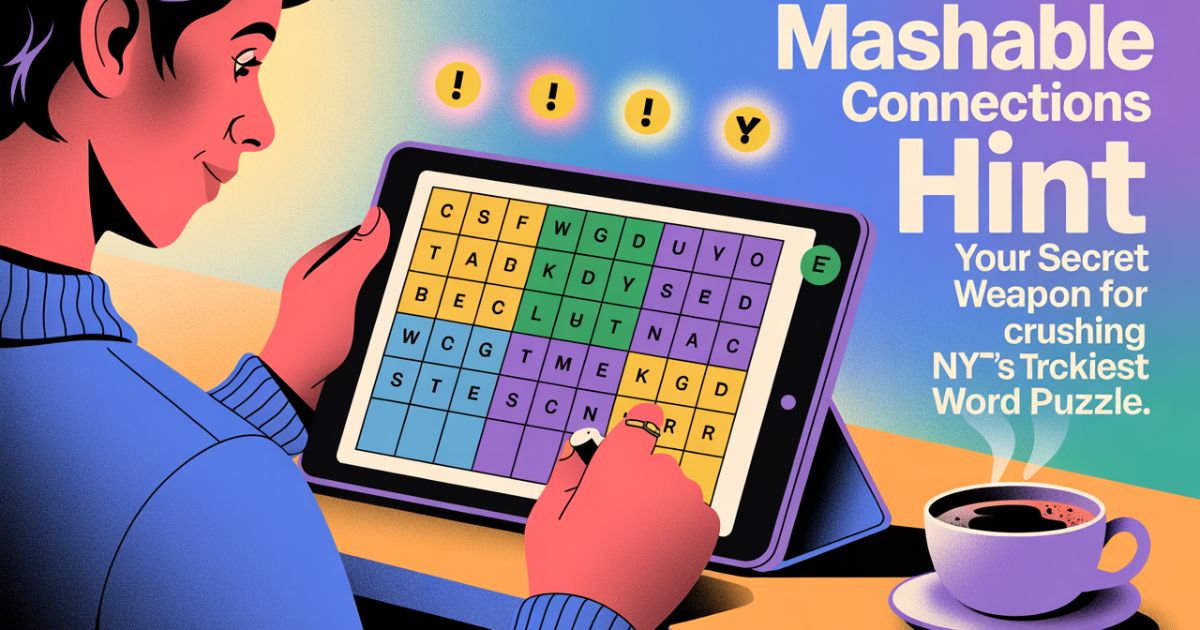It happened again. That purple category destroyed me before my morning coffee even cooled down. Sound familiar?
You’re staring at sixteen innocent-looking words on your screen. They seem simple enough. But the second you try grouping them? Boom. Wrong answer. Life lost. And suddenly that NYT Connections puzzle feels less like entertainment and more like a personal attack on your intelligence.
But here’s the thing—you don’t have to suffer alone anymore.
The Mashable Connections Hint system changed everything for puzzle solvers across America. It’s not about cheating. It’s about learning to think smarter, spot patterns faster, and actually enjoy the daily word game without wanting to throw your phone across the room.
| Search Term | Topic | Platform | Extra Info |
|---|---|---|---|
| Mashable Connections Hint | General | Mashable | Root term |
| mashable wordle hint today | Wordle | Mashable | Includes “today” |
| mashable connections hint september | Connections | Mashable | Specific date |
| mashable connections hint today sept | Connections | Mashable | Specific date |
| mashable connections hint today sept | Connections | Mashable | Specific date |
| mashable connections hint today | Connections | Mashable | Recurring daily query |
| mashable connections hint | Connections | Mashable | Core keyword |
| mashable connections hint today google search | Connections | Long-tail variation | |
| mashable connections hint today sept | Connections | Mashable | Dated query |
| mashable connections hint today july | Connections | Mashable | Dated query |
| mashable connections hint today july | Connections | Mashable | US holiday date |
| mashable connections hint july 4 | Connections | Mashable | Without “today” |
| mashable connections hint today july | Connections | Mashable | Dated query |
| mashable connections hint today june 27 | Connections | Mashable | Dated query |
| mashable connections hint today june 26 | Connections | Mashable | Dated query |
What Even Is the NYT Connections Puzzle, Anyway?
Picture this: Sixteen words scattered on your screen. Your mission? Group them into four categories of four words each. Sounds easy, right?
Wrong.
The New York Times created this puzzle to mess with your head—in the best way possible. Each day brings fresh words. Each day tests different parts of your brain. You get exactly four mistakes before game over.
The categories come color-coded by difficulty:
- Yellow: Usually straightforward and obvious
- Green: Requires some lateral thinking skills
- Blue: Demands specific knowledge domains
- Purple: Pure chaos wrapped in wordplay
Here’s where things get diabolically clever. Many words fit multiple categories perfectly. You might see Mercury, Mars, Venus, and Titan—thinking “planets!” But wait. Titan’s actually a moon. And Mercury? Could be a planet, a NASA mission, or even a chemical element.
That’s called a synonym trap, friend. And it’s everywhere.
The puzzle pulls from pop culture too. Ross, Rachel, Joey, and Monica seem random until you remember Friends. Buffy, Eleven, and Sirius sound unrelated until you realize they’re all character names from different shows.
Over two million Americans solve this puzzle daily. Why? Because cracking those connections releases dopamine faster than checking social media. Plus, you can share your results using colored emoji grids—instant bragging rights without spoilers.
So, What’s This “Mashable Connections Hint System” Everyone’s Talking About?

Mashable noticed something interesting. Players kept hitting the same walls. Getting frustrated. Giving up entirely. So they built something brilliant.
The Mashable Connections Hint system offers three tiers of help. Not answers. Help. There’s a massive difference.
Tier 1: The Vague Nudge
This hint feels almost useless at first. Something like “One group relates to heat.” That’s it. Nothing specific. Just enough to make you scan those sixteen words differently.
Your brain starts asking better questions. Which words connect to temperature? To cooking? To weather patterns? Suddenly you’re thinking instead of guessing.
Tier 2: The Middle Ground
Now we’re getting somewhere. Tier 2 might say “These four involve spicy food.” Okay! That narrows things down significantly. You start eyeing Tabasco, Sriracha, Frank’s, and Cholula with fresh eyes.
This tier confirms you’re heading the right direction. It saves you from wasting lives on completely wrong paths. Strategic puzzle solving in action.
Tier 3: The Almost-Answer
Tier 3 practically draws neon arrows. “These are hot sauce brands.” Boom. You’ve got it. But notice—it still doesn’t tell you which four words. You do the final work yourself.
That’s the genius of this system. It scaffolds your learning without stealing your victory. You choose how much help you need. No judgment. Just smart strategy.
Mashable Connections Hint System: Not Just Training Wheels
Let’s kill this myth right now: Using hints isn’t cheating.
Would you call someone who uses a calculator for taxes a cheater? Of course not. Tools exist for a reason. The Mashable Connections hint guide is a tool. A really good one.
Harvard and MIT researchers studied puzzle solving extensively. They found that strategic hint usage actually builds better cognitive skills than struggling alone. Why? Because hints teach pattern recognition. They show you what to look for next time.
Think about NASA’s Apollo missions. Astronauts didn’t freestyle their way to the moon. They used guidance systems, calculators, and detailed plans. Tools enabled exploration. Same principle applies here.
The hint system trains your brain to:
- Spot recurring category types faster
- Avoid common synonym traps entirely
- Develop reverse-engineering strategies naturally
- Build confidence instead of frustration
Players report measurable improvements over time. First week? Maybe you need all three tiers. Second month? Just Tier 1 usually does it. By month three? You’re solving purples without any help at all.
That’s not cheating. That’s smart learning.
Strategies to Solve the NYT Connections Puzzle Faster
Ready to crush today’s puzzle? Let’s break down proven word grouping strategies that actually work.
Start with the Obvious Stuff
Don’t overthink yellow categories. If you see clear planets, grab them immediately. Obvious colors? Lock them in. Build momentum with quick wins. Your brain needs that confidence boost before tackling harder groups.
Watch for Synonym Traps
This is where the NYT word games get sneaky. “Tear” could mean crying or ripping fabric. “Mercury” lives in multiple worlds—planet, element, or NASA mission. Always ask yourself: What else could this mean?
Cross-reference suspicious words before committing. That extra ten seconds saves lives.
Use the 2-Minute Rule
Stuck on a category for over two minutes? Don’t burn lives guessing randomly. Pop open Tier 1 from the Mashable daily hints. Still confused? Move to Tier 2. Strategic timing matters more than pride.
Test False Sets Deliberately
This sounds backwards but works incredibly well. Intentionally group words you’re unsure about. If it fails? Great! You just eliminated a red herring. Call it semantic disambiguation if that makes you feel fancy.
Build Your Category Library
Certain themes repeat constantly in puzzle-solving techniques:
- Types of cheese (cheddar, brie, gouda, swiss)
- Hot sauce brands (tabasco, sriracha, frank’s, cholula)
- Friends characters (ross, rachel, joey, monica)
- NASA missions (mercury, gemini, apollo)
Keep mental notes. Pattern recognition training pays dividends fast.
Real-World Walkthrough: Let’s Solve One Together

Time for action. Here’s a sample puzzle grid:
The 16 Words: Mercury, Venus, Titan, Apollo, Tabasco, Sriracha, Frank’s, Cholula, Ross, Rachel, Joey, Monica, Red, Green, Blue, Purple
Take thirty seconds. Scan them. Notice anything?
First Pass: Hot Sauce Brands (Yellow)
Tabasco, Sriracha, Frank’s, Cholula—these practically scream at you. All famous hot sauces. Easy dopamine hit. Lock it in. One down, three to go.
Second Pass: Friends Characters (Green)
Ross, Rachel, Joey, Monica—if you watched TV in the 90s, this clicks immediately. Pop culture references make up tons of NYT Connections categories. Another clean sweep.
Third Pass: Space Missions (Blue)
Here’s where it gets tricky. Mercury, Venus, Titan, Apollo could be planets. But Titan’s actually Saturn’s moon. The real connection? All NASA mission names. This requires specific knowledge, classic blue category behavior.
Fourth Pass: Meta Colors (Purple)
Red, Green, Blue, Purple—the trickiest part? These are the actual difficulty colors from the puzzle itself. Self-referential brilliance. This is why purple categories feel chaotic. They love wordplay and meta-references.
Victory! Clean four-for-four completion. No hints needed. That’s the power of methodical thinking and pattern recognition.
Common Mistakes People Make (And How to Dodge ‘Em Like a Space Rock)
Let’s talk about what not to do.
Rushing Your First Guess
Panic-clicking burns lives faster than anything. This isn’t an emergency. You’ve got time. Take thirty seconds before submitting. Think it through. Double-check.
Ignoring Wordplay Completely
“Turkey” might mean the bird. Or Thanksgiving dinner. Or the country. Purple categories love double meanings. Always consider puns, homophones, and alternate definitions.
Going All-In on Hints Immediately
Don’t skip straight to Tier 3. The tiered progression exists for good reason. Start at Tier 1. Let your brain work. Progress gradually. That’s where the learning happens.
Forgetting Themes Repeat
Cheese categories pop up constantly. So do hot sauces. And Friends characters. Build your mental library. The NYT puzzle hints patterns repeat more than you’d think.
How to Write Your Own “Mashable-Style” Hints (Yes, You Can)
Want to flex those brain muscles harder? Create your own connections hint system for friends or students.
Sample Words: Cheddar, Brie, Gouda, Swiss
- Your Tier 1: “These items come from dairy”
- Your Tier 2: “You’d find all four in the deli section”
- Your Tier 3: “These are types of cheese”
See how that works? Gradual clarity without spoiling the answer. This exercise teaches conceptual thinking—the holy grail of puzzle-solving guide creation.
Chef Gotxen Godolix actually uses Mashable-style hints in corporate team-building workshops. Teachers create custom puzzles for classrooms. The applications go way beyond daily word games.
Cognitive Benefits of Puzzle Solving (Science Time!)

Harvard and MIT researchers love studying brain teaser challenges. Their findings? Daily puzzle solving provides serious cognitive benefits.
Regular connections puzzle strategies practice:
- Strengthens working memory by holding multiple possibilities simultaneously
- Boosts pattern recognition through category template building
- Enhances creative thinking via flexible word associations
- Reduces stress by providing meditative focus states
Think of it as choosing brain salad over doom fries. You’re training cognitive muscles while scrolling serves empty mental calories.
Players who use the Mashable puzzle walkthrough system report sustained engagement without burnout frustration. That balance matters for long-term cognitive health.
Final Thoughts
Solving the NYT Connections puzzle isn’t about proving you’re smarter than everyone else. It’s about curiosity. About making connections between words, ideas, and occasionally the person next to you who also thinks Mercury is a soda brand.
The Mashable Connections Hint system gives you a ladder. But you still gotta climb it. It’s elegant, powerful, and designed to empower your brain—not replace it.
Every purple category eventually cracks. Pattern libraries build naturally over time. You’re already smarter than yesterday’s puzzle. Tomorrow brings fresh challenges and new opportunities to flex those mental muscles.
So grab your coffee. Open that puzzle. And remember—strategic hint usage isn’t weakness. It’s wisdom.
Frequently Asked Questions
What are Mashable Connections hints?
Mashable provides daily tiered hints for the NYT Connections puzzle. Three levels of clarity help players solve without spoiling the fun. Released shortly after each puzzle drops.
How do I find Connections hint today Mashable?
Visit Mashable’s website and search “Connections hints Mashable” or “Mashable Connections hint today.” Updates typically post within two hours of the NYT release.
Is using NYT Connections hints Mashable considered cheating?
Absolutely not. Strategic tool usage builds pattern recognition skills. Even expert solvers use hints occasionally. It’s smart puzzle solving, not cheating.
Can Mashable puzzle hints improve my solving speed?
Yes. Regular hint usage teaches category patterns. Your brain builds templates. Many players report solving 30-40% faster after consistent practice.
When should I use the Mashable Connections hint system?
After two minutes stuck on a category. Before burning all four lives. When completely stumped. Strategic timing prevents frustration while maintaining challenge.


